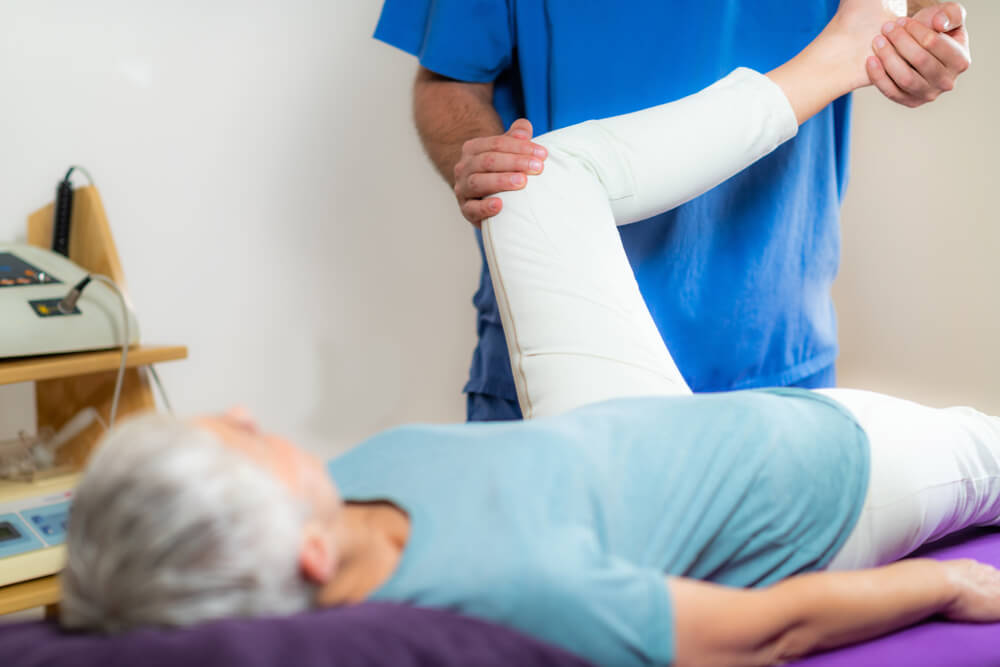Muscles. Tendons. Ligaments. Bones. Both the hips and knees are areas in the body where these structures join together to help you achieve complex movement.
If there is damage and subsequent pain in these areas, it can be difficult to perform daily activities. Unfortunately, hip and knee discomfort are all too common. It’s reported that up to 40% of U.S. adults over 60 suffer from chronic hip pain, and research shows frequent knee pain occurs in 25% of adults. There are several specific ways that physical therapy can help reduce hip and knee pain. To do this, a physical therapist will first need to discover the cause of your pain.
Common conditions that cause hip and knee pain
There are several conditions that often affect the knees and hips. These conditions can occur due to repetitive motion, traumatic injury or chronic disease. Some of the issues that are most likely to cause hip and knee pain include:
- Arthritis – Arthritis is a category of conditions that involves inflammation of tissue that surrounds and makes up joints. This condition can be the result of natural wear and tear. When this is the case, it’s known as osteoarthritis. A physical therapist can teach you correct posture and proper movement techniques to protect your joints. They also offer treatment techniques that can reduce osteoarthritis pain.
- Strains and sprains — Strains happen when a muscle or tendon is stretched excessively or torn. A sprain is a stretched or torn ligament. Ligaments may even rupture, causing bruising, pain and limited mobility. A physical therapist can help you recover more quickly while showing you exercise techniques to reduce pain.
- Meniscus tears — This is one of the most common knee injuries people experience. A torn meniscus can cause stiffness, swelling and varying degrees of pain. This condition could be the result of a sudden stop or repetitive motions. You’re at higher risk if you’re engaging in aggressive pivoting and twisting of your legs. A physical therapist can provide non-surgical treatment for a torn meniscus.
- Bursitis — Bursitis occurs when a small sac of fluid known as a bursa becomes inflamed. This is often caused by overuse or repetitive movements. Bursitis can occur in a variety of locations in the body, including the knees and hips. Physical therapy can aid in recovery and the reduction of pain.
How can physical therapy help your hip and knee pain?
No matter what condition you have, a physical therapy program can be built to help reduce your hip and knee pain. Your physical therapist will evaluate your condition and create an individualized program to meet your specific needs. Range-of-motion and strength measurements may be taken during the physical therapy evaluation.
The following are several treatment methods your physical therapist can use to help your hips and knees:
- Manual therapy — Your physical therapist may use several hands-on techniques to reduce pain in your hips and knees. This could include stretching your hip or knee. It can also involve applying therapeutic pressure to soft tissue around the affected joint.
- McKenzie Method® — The McKenzie Method involves a therapy specialist evaluating your condition. They’ll educate you about it and your treatment options. Your physical therapist can teach you exercises to do at home to alleviate hip and knee pain. These can be incorporated into a home exercise program that can become part of your daily routine.
Find hip and knee pain physical therapy at Excel Sports & Physical Therapy
Need help addressing your hip and knee pain? Our Excel Sports & Physical Therapy are ready and willing to help you find ways to decrease your pain. We offer free screenings intended to pinpoint the cause of your joint pain.
Additionally, our physical therapists excel at constructing individualized therapy plans designed to reduce pain and improve your ability to move. We can even help you get therapy from your home thanks to our virtual therapy and at-home care services.
Take the next step to start getting our help with your joint pain. Contact our team today for more information about our high-quality therapy services or to schedule an initial appointment.






